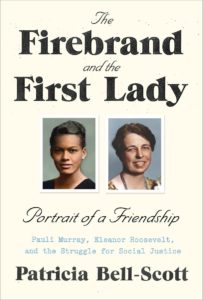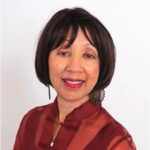Lecture Date: March 29, 2018
The Chancellor’s Village Lecture

Pauli Murray, an African American writer-turned-activist, first saw Eleanor Roosevelt in 1933, at the height of the Depression, at a government-sponsored, two-hundred-acre camp for unemployed women where Murray was living near Bear Mountain, New York. The first lady, who had lobbied Franklin Roosevelt’s administration to set up the facility, appeared one day unannounced, behind the wheel of her car, with her secretary and a man presumed to be a Secret Service agent as passengers. To Murray, then aged twenty-three, Roosevelt’s self-assurance was a symbol of women’s independence, a symbol that endured throughout Murray’s life.
Five years later, Pauli Murray, penned a letter to Franklin and Eleanor Roosevelt protesting racial segregation in the South. The president’s staff forwarded Murray’s letter to the federal Office of Education. But the first lady wrote back. And so began a friendship that would last for a quarter of a century between Pauli Murray, who became a lawyer, civil and women’s rights pioneer, and the first black woman to be ordained as an Episcopal priest, and Eleanor Roosevelt, who became a diplomat and human rights leader in her own right.
Speaker: Patricia Bell-Scott

Patricia Bell-Scott is professor emerita of women’s studies and human development and family science at the University of Georgia. Her previous books include Life Notes: Personal Writings by Contemporary Black Women; Flat-footed Truths: Telling Black Women’s Lives; and Double Stitch: Black Women Write about Mothers and Daughters, which won the Letitia Woods Brown Memorial History Book Prize. Bell-Scott served for a decade as co-founding editor of SAGE: A Scholarly Journal on Black Women